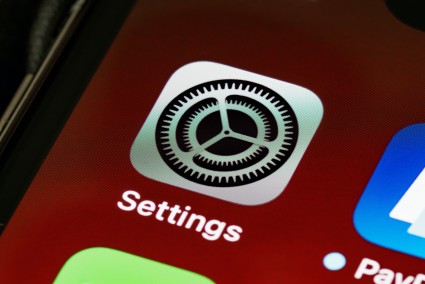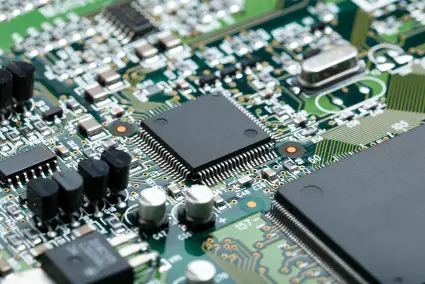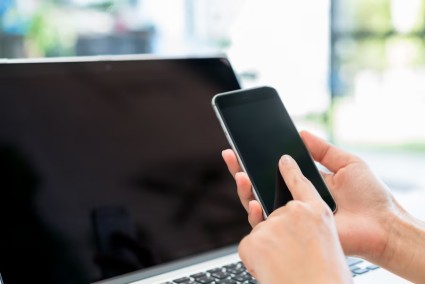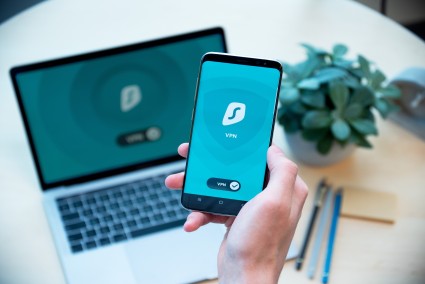
When a laptop is having trouble connecting to a hotspot, it is important to understand why this is happening. This can help in identifying the correct solution. There are a few common reasons why a laptop may not be able to connect to a hotspot. These include a lack of signal strength, incorrect connection settings, or the laptop’s inability to detect the hotspot.
Content of the page
If you don’t know how to connect to hotspot from your laptop, you may want to check the guide on how to connect to hotspot with laptop step by step.
If you are using a mobile phone to connect hotspot with a laptop, you better read our guide Hotspot from phone to laptop.
Common Reasons for Hotspot Connection Failures

| Reason | Description |
|---|---|
| Lack of signal strength | Hotspots located in public places may have weaker signals compared to private homes. If the laptop is too far away from the hotspot or there are physical obstructions like walls or furniture, the signal may be too weak to detect. |
| Incorrect connection settings | Incorrectly configured connection settings on the laptop can prevent it from connecting to a hotspot. This may occur when default settings are changed or if the hotspot only allows specific devices to connect. |
| Inability to detect hotspot | Some laptops may not be able to detect a hotspot due to issues with the wireless adapter or outdated operating system. Even with a strong signal and correct settings, the laptop may not recognize the hotspot. |
One of the most common reasons for a laptop not being able to connect to a hotspot is a lack of signal strength. Hotspots are typically located in public places and therefore may have weaker signals than those found in private homes. If the laptop is too far away from the hotspot, the signal may be too weak for the laptop to detect. Additionally, physical obstructions such as walls or furniture may interfere with the signal, resulting in a weaker connection.
Incorrect connection settings can also prevent a laptop from connecting to a hotspot. If the connection settings are not correctly configured, the laptop may be unable to establish a connection. This can occur if the user has changed the default settings or if the hotspot is configured to only allow certain devices to connect.
Finally, some laptops may simply be unable to detect the hotspot. This can occur if the laptop’s wireless adapter is not functioning properly or if the laptop’s operating system is out of date. In these cases, the laptop may not be able to detect the hotspot even if the signal is strong and the connection settings are correct.
Different Types of Hotspot Connection Issues

| Connection Issue | Description |
|---|---|
| Signal interference | Interference from other devices or networks can disrupt the hotspot signal, resulting in a weak or unstable connection. |
| Hardware issues | Problems with the laptop’s wireless adapter or other hardware components can cause difficulties in establishing a connection to the hotspot. |
| Software issues | Issues with the laptop’s operating system, drivers, or network configuration can lead to connection problems with the hotspot. |
| Access restrictions | Some hotspots may have access restrictions in place, allowing only authorized devices to connect. If the laptop is not authorized, it will be unable to establish a connection. |
Hotspot connection issues can vary in severity and can have a wide range of symptoms. Common symptoms include slow connection speeds, frequent disconnections, or complete inability to connect. Additionally, some hotspots may be unable to provide certain services such as streaming video or gaming.
In order to identify and troubleshoot hotspot connection issues, it is important to understand the type of issue that is occurring. This can help in determining the cause of the issue and the most appropriate solution. Common types of hotspot connection issues include signal interference, hardware issues, software issues, and access restrictions.
Impact of Hotspot Connection Problems on Laptop Usage
Hotspot connection issues can have a significant impact on laptop usage. Without access to a reliable internet connection, users may be unable to access certain websites or use certain applications. This can make it difficult or impossible to perform certain tasks such as streaming videos, downloading files, or using online services.
In addition, connection issues can also cause unexpected disruptions to laptop usage. For example, if the connection is suddenly disconnected, any unsaved work may be lost. Additionally, if the connection is unreliable, it can lead to decreased productivity and frustration.
It is therefore important to take steps to ensure that the laptop can reliably connect to hotspots. This can include ensuring that the laptop is within range of the hotspot, configuring the connection settings correctly, and keeping the laptop’s operating system up to date. Doing so can help to ensure that the laptop is able to access the internet when needed.
Troubleshooting Hotspot Connection Issues

| Check Wi-Fi Settings on Your Laptop |
| Verify Hotspot Settings on Your Mobile Device |
| Restart Your Laptop and Mobile Device |
| Update Wi-Fi Drivers on Your Laptop |
| Disable and Enable Wi-Fi Adapter on Your Laptop |
| Clear Network Settings on Your Laptop |
| Adjust Power Management Settings |
When you’re trying to connect your laptop to a hotspot, you may experience connection issues. To help resolve this issue, there are several troubleshooting steps you can take.
Step 1: Check Wi-Fi Settings on Your Laptop
The first step is to check the Wi-Fi settings on your laptop. Make sure that your laptop is connected to the correct wireless network and that the connection is stable. To do this, open your laptop’s Wi-Fi settings and make sure that your laptop is connected to the correct wireless network.
Step 2: Verify Hotspot Settings on Your Mobile Device
The next step is to verify the settings on your mobile device. Make sure that the hotspot is turned on, and that it’s broadcasting the correct network name. Also, make sure that the password is correct.
Step 3: Restart Your Laptop and Mobile Device
If the settings are correct, try restarting your laptop and mobile device. This will help to reset the connection and may resolve any connection issues.
Step 4: Update Wi-Fi Drivers on Your Laptop
If restarting your devices doesn’t solve the issue, the next step is to update the Wi-Fi drivers on your laptop. To do this, open the Device Manager and select your Wi-Fi adapter. Right-click on the adapter and select “Update Driver”.
Step 5: Disable and Enable Wi-Fi Adapter on Your Laptop
If updating the drivers doesn’t solve the issue, try disabling and re-enabling the Wi-Fi adapter on your laptop. To do this, open the Device Manager and select your Wi-Fi adapter. Right-click on the adapter and select “Disable”. Once the adapter is disabled, right-click on it again and select “Enable”.
Step 6: Clear Network Settings on Your Laptop
If disabling and re-enabling the adapter doesn’t work, try clearing the network settings on your laptop. To do this, open the Network and Sharing Center and select “Change adapter settings”. Right-click on the adapter and select “Delete”. Once the adapter is deleted, restart your laptop and the adapter will be automatically reinstalled.
Step 7: Adjust Power Management Settings
Another potential solution is to adjust the power management settings on your laptop. To do this, open the Power Options and select the “Change plan settings” link. Then, select the “Change advanced power settings” link. Finally, expand the Wireless Adapter Settings and change the Power Saving Mode to “Maximum Performance”.
If you’ve tried all of these steps and still can’t connect your laptop to the hotspot, it may be time to contact your Internet Service Provider (ISP) for further assistance.
Advanced Solutions for Hotspot Connection Problems

| Solution | Description |
|---|---|
| Reset Network Settings on Your Mobile Device | Resetting your mobile device’s network settings can help resolve unstable or unreliable connections. |
| Change Hotspot Channel and Bandwidth Settings | Adjusting the channel and bandwidth settings of your mobile hotspot may improve connection stability. |
| Disable Firewall and Antivirus Software Temporarily | Temporarily disabling firewall and antivirus software on your laptop can eliminate potential interference with the hotspot connection. |
| Disable VPN Connections | Disabling any active VPN connections on your laptop can help establish a stable connection to the hotspot. |
| Perform a System Restore on Your Laptop | Performing a system restore on your laptop can revert settings and resolve connection issues. |
| Update Firmware on Your Mobile Device | Updating the firmware on your mobile device can fix bugs and enhance connection performance. |
When you’re trying to connect your laptop to a mobile hotspot, the connection can sometimes be unstable or unreliable. This can be especially frustrating if you are relying on the hotspot connection to work or if you are trying to get a project done. Fortunately, there are some advanced solutions that you can try in order to improve the connection.
Reset Network Settings on Your Mobile Device
If you’re having trouble connecting to a mobile hotspot, one of the first things you should try is resetting your mobile device’s network settings. This will reset any settings that may be causing the connection to be unstable or unreliable. To do this, go to the settings menu on your mobile device and select the option to reset your network settings. After the reset is complete, try connecting to the hotspot again.
Change Hotspot Channel and Bandwidth Settings
Another potential solution is to change the settings of your mobile hotspot. In some cases, the settings of the hotspot can be causing the connection to be unstable or unreliable. To change the settings of your hotspot, open the settings menu on your mobile device and select the option to change the settings for your hotspot. You can then adjust the channel and bandwidth settings for your hotspot. After making the changes, try connecting to the hotspot again.
Disable Firewall and Antivirus Software Temporarily
Sometimes, the firewall or antivirus software on your laptop can be preventing a stable connection to the mobile hotspot. To make sure this is not the case, try disabling the firewall and antivirus software temporarily and then try connecting to the hotspot again. If the connection is more stable after disabling the software, then you know the firewall or antivirus software was the culprit.
Disable VPN Connections
It’s also possible that a VPN connection is preventing a stable connection to the mobile hotspot. To make sure this is not the case, try disabling any active VPN connections and then try connecting to the hotspot again. If the connection is more stable after disabling the VPN connection, then you know the VPN connection was the culprit.
Perform a System Restore on Your Laptop
If none of the above solutions work, then you may need to perform a system restore on your laptop. This will restore your laptop to a previous state, which may help to resolve any connection issues. To perform a system restore, open the control panel on your laptop and select the option to perform a system restore. Follow the on-screen instructions to complete the restore.
Update Firmware on Your Mobile Device
If the above solutions still don’t work, then you may need to update the firmware on your mobile device. Firmware updates can fix bugs and improve the performance of your device, which may help to resolve any connection issues. To update the firmware on your device, go to the settings menu and select the option to update the firmware. Follow the on-screen instructions to complete the update.
Additional Tips to Improve Hotspot Connection

| Tips | Description |
|---|---|
| Use a Reliable Mobile Network Provider | Choosing a reliable mobile network provider ensures strong signal coverage and reliable connection speeds. |
| Keep Your Laptop and Mobile Device in Proximity | Maintaining close proximity between your laptop and mobile device helps maintain a strong and reliable connection. |
| Optimize Wi-Fi Signal Strength | Improving Wi-Fi signal strength by moving closer to the hotspot or using external Wi-Fi antennas or extenders can enhance connection quality. |
| Limit the Number of Connected Devices | Reducing the number of devices connected to the hotspot can prevent bandwidth congestion and improve connection performance. |
| Regularly Update Software and Drivers | Keeping your laptop’s software, drivers, and mobile device’s firmware up to date ensures compatibility and stability with the hotspot connection. |
Use a Reliable Mobile Network Provider
If you’re having trouble connecting to a mobile hotspot, one of the best things you can do is make sure you’re using a reliable mobile network provider. A good mobile network provider should have strong signal coverage in your area, as well as good customer service and reliable connection speeds. Do some research to find the best mobile network provider in your area.
Keep Your Laptop and Mobile Device in Proximity
When connecting to a mobile hotspot, it’s important to keep your laptop and mobile device in close proximity. This will help to ensure that the connection is strong and reliable. If possible, keep the devices within a few feet of each other when connecting.
Optimize Wi-Fi Signal Strength
Another way to improve your connection to a mobile hotspot is to optimize the signal strength of the Wi-Fi connection. This can be done by moving the device closer to the hotspot, or by using an external Wi-Fi antenna or booster. These devices will help to improve the signal strength of the Wi-Fi connection, making it more reliable.
Use External Wi-Fi Adapters or Boosters
If you’re having trouble connecting to a mobile hotspot, one of the best solutions is to use an external Wi-Fi adapter or booster. These devices will help to extend the range of the Wi-Fi signal, making it more reliable. They are relatively affordable and easy to set up, so they are worth considering if you are having trouble connecting.
Keep Your Laptop’s Wi-Fi Adapter Updated
Finally, it’s important to make sure that your laptop’s Wi-Fi adapter is up to date. Outdated Wi-Fi adapters can cause connection problems, so make sure you are using the latest version. To check for updates, open the settings menu on your laptop and select the option to check for updates.
Conclusion
When you’re trying to connect to a mobile hotspot, there are a few advanced solutions you can try in order to improve the connection. Resetting your mobile device’s network settings, changing the settings of your hotspot, disabling your firewall and antivirus software, disabling VPN connections, performing a system restore, and updating the firmware on your mobile device are all potential solutions. Additionally, using a reliable mobile network provider, keeping your laptop and mobile device in proximity, optimizing Wi-Fi signal strength, using external Wi-Fi adapters or boosters, and keeping your laptop’s Wi-Fi adapter up to date can all help to improve your connection to a mobile hotspot.
